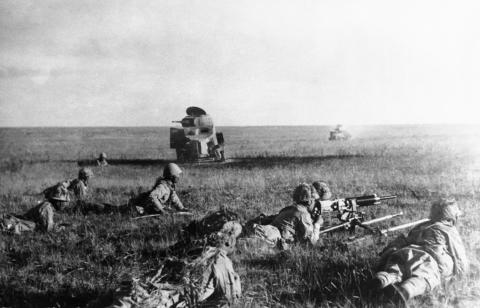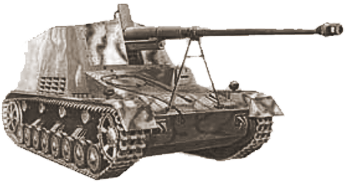The Summer of 1939 - The Imperial Japanese Army vs. the Red Army

Japan and the Soviet Union clashed repeatedly late in the 1930s most notably in 1938 near the Soviet port of Vladivostok, and then again in a massive battle in 1939 on the Soviet controlled Mongolian border at Khalkin Gol - Nomonhan. At Khalkin Gol the Red Army decisively defeated Japan, ultimately causing the Japanese to abandon plans for invading Siberia with up to 45 infantry divisions. More importantly Japan's defeat undoubtedly caused the Japanese to avoid stirring up trouble with the Russians and helped lead to the subsequent April 13, 1941 treaty of neutrality between Japan and the Soviet Union.
Fighting at Khalkin Gol began in May 1939 and, much as in 1938, early fighting centered around smaller divisional sized actions. The Red Army stopped several Japanese offensives cold. The Japanese responded by massing their forces for another push in July 1939. However, they would meet a much stronger Soviet foe than they had faced earlier in the spring. Nevertheless, both sides had gathered substantial armies. The Japanese alone deployed over 80,000 men supported by hundreds of armored vehicles and aircraft for their anticipated summer campaign. In opposition General Georgy Zhukov led the Soviet forces - a man destined to become perhaps the most famous Russian general in the Second World War. Zhukov's army numbered over thirty infantry and cavalry divisions and included several hundred tanks and armored cars.
Zhukov's men stopped the initial Japanese thrusts as he prepared his response - a classic battle of encirclement. Zhukov masked his intentions and deceived the Japanese Kwantung Army Command as to the size and location of his forces by using elaborate deception techniques and diversionary tactics. In addition, Zhukov's attack featured substantial holding forces; the 57,000 man strong LVII Special Corps, attacking in the middle of the Japanese Sixth Army's 75,000 man strong defensive positions to tie down the defenders as Soviet armor swung around the Japanese flanks.
The Soviet offensive opened with a crushing bombardment delivered by massed artillery and waves of bombers. For four hours Zhukov's heavy artillery and bombers pounded Japanese lines. Although the stunned Japanese put up a stiff fight, after only three days the Russian armies had encircled the bulk of the Japanese defenders. Upon tightening the noose around his encircled opponent Zhukov relentlessly bombarded the cut off Japanese army, inflicting massive casualties. By September, both sides had agreed on a cease-fire, much to the Japanese officer's relief. Japan paid dearly for provoking the Red Army, suffering tens of thousands of casualties including at least 30,000 dead against Soviet casualties totaling 24,000 men, including 6,841 killed and 1,143 missing.
by Steven Douglas Mercatante



Post new comment